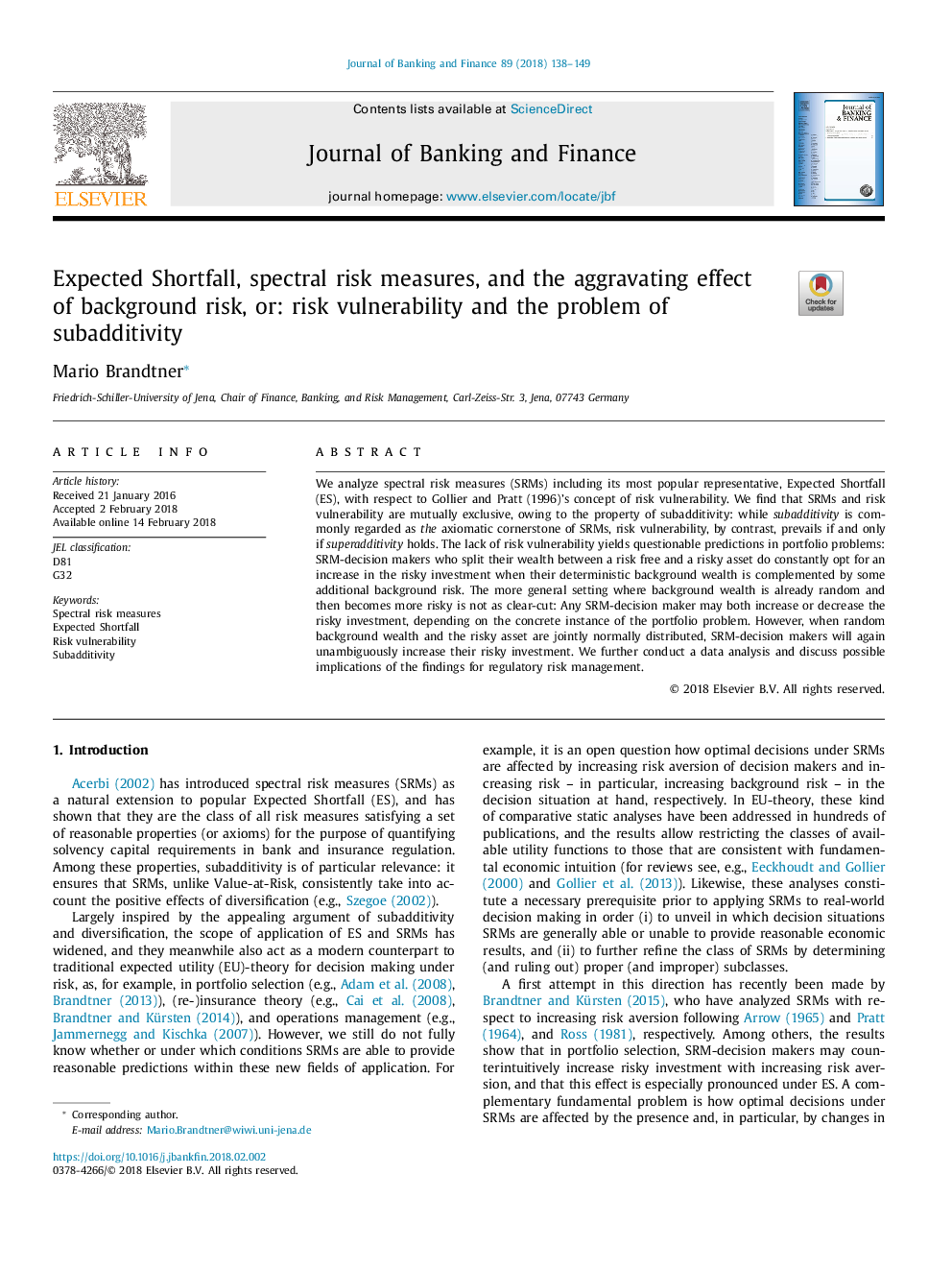| Article ID | Journal | Published Year | Pages | File Type |
|---|---|---|---|---|
| 7356589 | Journal of Banking & Finance | 2018 | 12 Pages |
Abstract
We analyze spectral risk measures (SRMs) including its most popular representative, Expected Shortfall (ES), with respect to Gollier and Pratt (1996)'s concept of risk vulnerability. We find that SRMs and risk vulnerability are mutually exclusive, owing to the property of subadditivity: while subadditivity is commonly regarded as the axiomatic cornerstone of SRMs, risk vulnerability, by contrast, prevails if and only if superadditivity holds. The lack of risk vulnerability yields questionable predictions in portfolio problems: SRM-decision makers who split their wealth between a risk free and a risky asset do constantly opt for an increase in the risky investment when their deterministic background wealth is complemented by some additional background risk. The more general setting where background wealth is already random and then becomes more risky is not as clear-cut: Any SRM-decision maker may both increase or decrease the risky investment, depending on the concrete instance of the portfolio problem. However, when random background wealth and the risky asset are jointly normally distributed, SRM-decision makers will again unambiguously increase their risky investment. We further conduct a data analysis and discuss possible implications of the findings for regulatory risk management.
Related Topics
Social Sciences and Humanities
Economics, Econometrics and Finance
Economics and Econometrics
Authors
Mario Brandtner,
